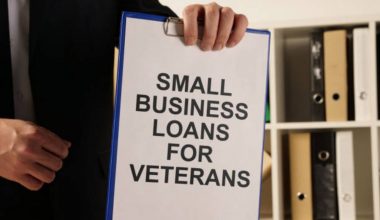The mortgage stimulus program is always good news for most homeowners. This is because it affords them the opportunity to acquire a home at lower rates. In this article, you’ll see various mortgage stimulus relief programs that you can benefit from. And if you’re wondering if Congress has a mortgage stimulus relief program available, you’ll find out in this chapter.
The Mortgage Stimulus Relief Program
There has never been a better time for many people to become homeowners. Home prices are rapidly rising, and if you’re having trouble keeping up with payments, a variety of mortgage refinance programs are available to assist you.
Mortgage rates are reaching all-time lows, and homeowners might save a large amount of money on their monthly payments. But what if you can’t refinance because your mortgage balance is close to, or even exceeds, the market value of your home? There could be some good news for you as well.
Fortunately, property values across the country have been significantly rising. There are fewer and fewer underwater homeowners.
As a result, even without a particular program like HIRO or FMERR, many homeowners may be able to refinance. It’s worth examining your refinance eligibility to see if you qualify for low-interest rates and a lower monthly payment.
Which Mortgage Stimulus Relief Program is Available in 2023?
#1. Home Affordable Refinance Program
The HARP (Home Affordable Refinance Program) was in the program from April 2009 to the end of 2018. It assisted over 3.5 million borrowers in effectively refinancing their Fannie Mae or Freddie Mac mortgages.
To provide similar refinance relief to HARP, the Fannie Mae High LTV Refinance Option (HIRO) and the Freddie Mac Enhanced Relief Refinance (FMERR) programs were developed in recent years.
These new programs are critical because mortgage rates have fallen dramatically in the last 18 months. In early January 2021, the 30-year fixed mortgage rate reached an all-time low of 2.65 percent.
Even in October 2021, 30-year fixed-rate mortgage rates were hovering just below or slightly above 3%.
Homeowners whose house values were too low in comparison to their mortgage loads were banned from taking advantage of these record low-interest rates—and the significant monthly savings that came with them.
This is where HIRO and FMERR come into play. Both schemes permitted homeowners to refinance their Fannie Mae or Freddie Mac mortgages even if they were “underwater,” or owe more than the market value of their home. Despite the fact that these relief initiatives are temporarily on hold, many homeowners are discovering that they can still refinance to a cheaper payment due to increased equity and low-interest rates.
#2. HIRO: The Mortgage Stimulus Package for the Middle Class
Due to a low number of applicants, Fannie Mae has temporarily stopped the HIRO program. With home equity expanding across the country, many owners are now able to refinance without the need for a specific program like HIRO. Contact a lender to determine your equity levels and whether you are eligible for a refinance.
Some even refer to the HIRO program as a stimulus program for the middle class. Why? First, it replaces HARP, a lending program created by Congress in 2009 to assist millions of homeowners in refinancing their mortgages and obtaining a reduced mortgage rate with no equity required.
Second, the HIRO loan assists underwater homeowners in lowering their rates and payments at a time when interest rates are at an all-time low.
A refinance can put significant money back into the pockets of middle-class Americans, stimulating the economy as well as the everyday household.
HIRO has additional benefits. You may be eligible for an appraisal waiver, which can save you hundreds of dollars. Even if you require an appraisal, the value is irrelevant. You can borrow $200,000 on a home worth $175,000 and yet refinance to get a cheaper interest rate.
This potentially leaves thousands of homeowners who may have registered for the 2009 HARP but did not have the opportunity before the federal government program expired.
Read Also: EASEMENT: Everything You Should Know
HIRO Eligibility
The HIRO qualifications are straightforward, but they are critical. You may be eligible for HIRO if you meet the following criteria:
- Fannie Mae* owns your current mortgage loan.
- Your loan must have started after October 1, 2017.
- At least 15 months have passed between the previous loan’s note date and the new home loan’s note date.
- In the last six months, you have made all of your payments on time.
- For a one-unit, owner-occupied dwelling, your mortgage balance is 97.1 percent or greater as a proportion of the home’s market value.
If you meet these requirements, you are extremely likely to qualify for cheaper rates, but you must act quickly before rates rise. Speak with your mortgage lender about your possibilities for debt relief.
#3. FMERR: The Enhanced Relief Refinance Program.
Due to a low number of applicants, Freddie Mac has temporarily suspended the FMERR program. With home equity expanding across the country, more owners are now able to refinance without the need for a specific program like FMERR. Contact a lender to determine your equity levels and whether you are eligible for a refinance.
Freddie Mac’s Enhanced Relief Refinance program (FMERR) was established to assist homeowners with minimal equity in taking advantage of historically low-interest rates and lowering their monthly payments.
Eligibility for FMERR
You may be eligible for FMERR if you meet the following criteria:
- Freddie Mac owns your current mortgage*.
- Your loan began on or after November 1, 2018.
- For a one-unit, owner-occupied residence, your LTV must be at least 97.01 percent.
- In the last six months, you have made all of your payments on time.
- For a one-unit, owner-occupied dwelling, your mortgage balance is 97.1 percent or greater as a proportion of the home’s market value.
If you meet these requirements, you are extremely likely to qualify for cheaper rates, but you must act quickly before rates rise. Speak with your mortgage lender about your possibilities for debt relief.
Is There A Mortgage Stimulus Relief Program from Congress?
Despite the fact that there is no present mortgage stimulus from Congress, there is federal assistance available for homeowners.
President Joe Biden famously signed the American Rescue Plan into law in March 2021, which contained mortgage stimulus payments to practically all households. It also gave special financial help to homeowners that were — or are — financially strained as a result of the COVID-19 outbreak.
The Homeowner Assistance Fund (HAF) is designed to assist you with your monthly mortgage payments, as well as your property taxes, homeowners insurance, homeowners association (HOA) fees, and utility bills.
Although they are federal funds, they have been distributed to states for administration. You apply for assistance from your state’s housing finance agency.
These grants have some eligibility limitations. Your mortgage debt must be $548,250 or less to qualify, and the majority of the funds are intended for borrowers with average or below-average earnings.
Mortgage Forbearance Negotiation
Most mortgage servicers are eager to deal with borrowers who are behind on their mortgage payments.
If your mortgage is owned by Fannie Mae or Freddie Mac, or if it is a government-backed loan (FHA, VA, or USDA), you have more defined rights. You may be able to halt or lower your mortgage payments for an agreed-upon period of forbearance (up to 18 months in extreme cases).
Of course, you’ll still owe the money and will have to repay it at some point in the future. Nonetheless, you should not encounter any additional costs, interest, or penalties with these loans.
FHA, VA, and USDA loans: Government-backed Loans
If you have a government-backed loan, such as an FHA, VA, or USDA loan, you will be unable to participate in the HIRO or FMERR programs.
Still, there is another excellent refinance option available to help homeowners lower their mortgage interest rate – even if the market value of their house is low in comparison to their mortgage total.
Even though your mortgage is underwater, you may be able to refinance if it is backed by the Federal Housing Administration, the Department of Veterans Affairs, or the United States Department of Agriculture.
Streamline Refinance alternatives are available through the FHA, VA, and USDA loan programs. These are quick and economical refinance loans with fewer qualifying restrictions. These Streamline Refinance services require less paperwork and cost less than a traditional refinance.
Streamline Refinance Eligibility
- You may be qualified for a Streamline Refinance if you meet the following criteria:
- You have a loan from the FHA, VA, or USDA.
- You will clearly profit from the refinance, such as a cheaper mortgage rate or monthly payment.
- There have been no missed payments in the last six months.
If you meet these requirements, you are extremely likely to qualify for cheaper rates, but you must act quickly before rates rise. Discuss your specific finances and relief alternatives with your mortgage lender.
VA Streamline Refinance
Though not a formal mortgage stimulus relief program, VA borrowers can use the VA Streamline Refinance, also known as the Interest Rate Reduction Refinance Loan (IRRRL), which allows military service members and their families to take advantage of low-interest rates and lower their monthly mortgage payment quickly and affordably.
Borrowers can roll all closing costs into the new loan and pay them down over the life of the loan, which is a significant advantage of the IRRRL. That implies you can remortgage without investing any money upfront.
The VA Streamline Refinance is one of the greatest mortgage options on the market for borrowers wishing to lower their interest rate without taking any cash out of their home equity.
Eligibility for VA Streamline Refinance
You must meet the VA’s minimum service criteria to be eligible for a VA Streamline Refinance. Most veterans, including National Guard and Reservists, as well as their families, are eligible.
Typically, you can qualify for a VA Streamline Refinance with no credit score, income or asset verification, or property appraisal. This means you’ll be able to refinance fast and affordably.
You may be qualified in addition to meeting the minimum service requirements if you meet the following criteria:
- In the last six months, you have made all of your payments on time.
- It’s been at least 210 days since you closed on your existing loan.
- You will clearly profit from the new mortgage, such as a cheaper mortgage rate or monthly payment.
In Conclusion,
With COVID’s influence fading, Congress has reduced much of its COVID-era mortgage stimulus. Fortunately, mortgage relief programs are still accessible to homeowners in need. Mortgage relief can take many different forms. Whether you require a reduced interest rate and payment or a break from paying payments entirely, we hope you find the options in our article useful.
Mortgage Stimulus FAQs
Does Congress have a mortgage stimulus program?
Congress does not have any mortgage stimulus relief program at the moment.
Is there a government mortgage relief program?
The CARES Act and subsequent American Rescue Plan are all government mortgage relief programs.






